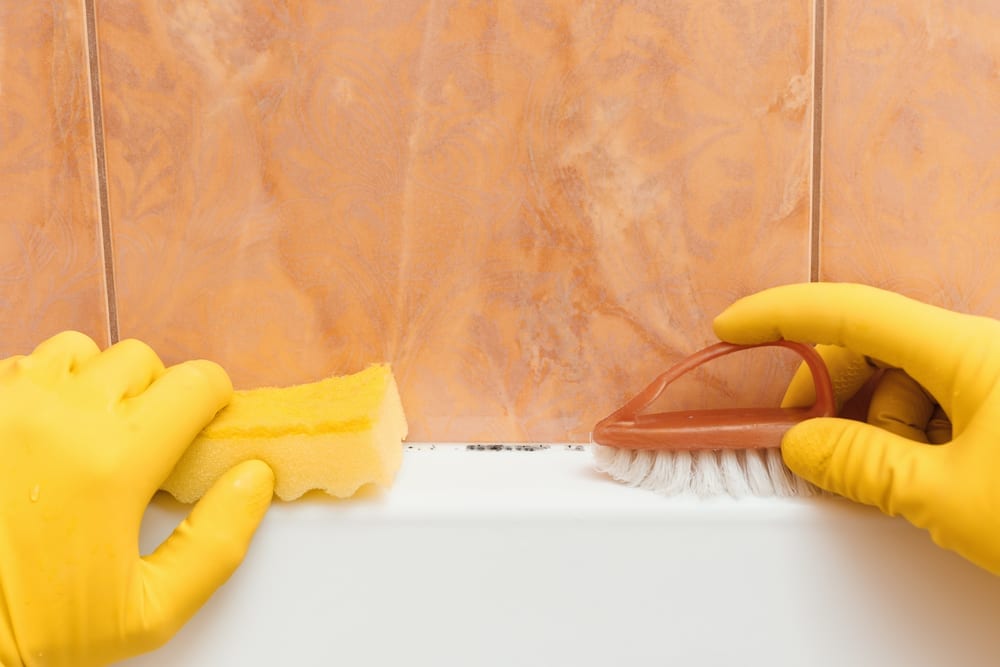We know that, just like nearly everyone else across Canada, you’ve been spending a lot more time at home, as of late. Battling the coronavirus pandemic requires us all to practice social distancing and stringent hand washing routines. Of course, it also calls upon us to stay at home unless it’s absolutely necessary to leave the house.
Because you’re in the house more often, you likely having to do more cleaning. This is especially true of your bathrooms. Using it more often obviously leads to the necessity to have it cleaned more often. This is especially true because the bathroom is a location of the house where mould likes to form. Naturally, we’re all doing our parts to stop the spread of COVID-19. But, while we’re home, we should also be mindful of the ways to clean away any mould growth.
Here are three sound solutions for removing mould from your bathroom:
1. Laundry detergent for the shower curtains.
It’s a lot easier to strip down your shower curtains and throw them in the laundry than it is to spray them and wipe them down as they hang. As Lauren Smith McDonough of Good Housekeeping explains, both plastic liners and washable plastic shower curtains can be cleaned in your washing machine.
“Wash a plastic curtain on the highest water level with regular amount of detergent, and add two to three bath towels for extra cleaning agitation,” she instructs, “Then, hang to dry or put into the dryer on low heat or air only.”
2. Vinegar for the tiles.
Vinegar is a natural product, so unlike other cleaning solutions, you don’t have to worry about chemicals that can irritate your senses when cleaning. If you have mould build-up between the tiles in your bathroom, use some white vinegar to get rid of it.
As The Maids of Omaha, Nebraska remind us, “vinegar is a mild acid which can kill 82% of mould species…To kill mould: Use white distilled vinegar and pour it into a spray bottle without watering it down. Spray the vinegar onto the mouldy surface and leave it to sit for an hour. Finally, wipe the area clean with water and allow the surface to dry. Any smell from the vinegar should clear within a few hours.”
3. Chlorine bleach for grout.
Grout is the dense, sticky fluid used to fill the gaps between your bathtub and the tiles on the wall. It also happens to be very susceptible to mould growth that can be very hard to remove with standard cleaning practices. McDonough suggests you use chlorine bleach to clean mould from the grout in your bathroom.
“To clean yucky grout, put on rubber gloves and eye protection,” she advises, “Mix 3/4 cup of chlorine bleach with 1 gallon water. Use a stiff brush to apply to one small area at a time. Be careful not to let the liquid spatter onto surrounding surfaces. Let it sit for several minutes, then scrub and rinse.”
At Enviro-Works Inc., we specialize in detecting mould using a number of methods. Our state-of-the-art laboratory services include detection of Mould In Air as well as through sampling bulk materials, using tapelifts and swabbing, also known as the Bulk/Tapelift/Swab methods. For more information about our Mould Testing, please don’t hesitate to call us at 780-457-4652 or email us at info@enviro-works.com.
